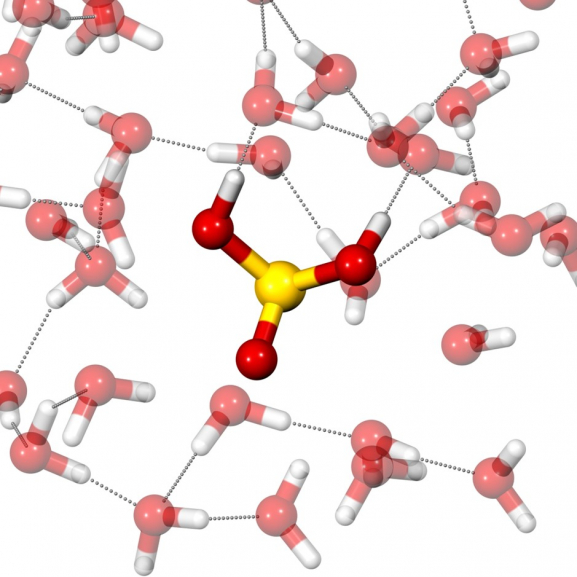 HKU Department of Earth Science
HKU Department of Earth Science
Seminar

Molecular acids and metals in hydrothermal media
-
Date
January 31,2023
-
Time
4:00PM - 4:30PM
-
Venue
JL104
-
Speaker
Mr. HUI Chi Hang Department of Earth Sciences, HKU
Hydrothermal and volcanic systems host a wide range of aqueous metals and molecular acids with unusual stabilities and molecular structures. The presence of such molecular species in hydrothermal fluids has important implications for metal speciation, transport, and deposition. The present study focuses on sulphurous acid H2SO3 (a ubiquitous molecular acid present in volcanic and fumarolic vapors) with a particular interest in its temperature-dependence acidity, as well as its role as a ligand in the speciation of metals in water vapor.
The ongoing study consists of three main themes: i) the structure and stability of SO2(H2O) as a precursor complex to sulphurous acid, ii) temperature dependence dissociation and speciation of H2SO3 towards (bi)sulphite ions (HSO3-, SO32-) in liquid and vapor environments, and iii) the binding of HSO3- and SO32- ions to gold(I) as transporting ligands in hydrothermal fluids. All three themes dovetail with each other and would fill some of the current knowledge gaps within sulphur chemistry in hydrothermal environments.
This presentation will mainly discuss results from a range of ongoing Car-Parrinello molecular dynamic (CPMD) simulations. Our recent results suggest that the acidity of H2SO3 decreases with increasing temperatures from 25-200°C, i.e. the propensity of ionization into H3O+ and a base decreases with increasing temperatures. We will also discuss preliminary results from gold(I)-(bi)sulphite MD simulations: results under this theme show that the Au(I) ion binds favourably towards the sulphur site of SO32- (and HSO3-), with [Au(SO3)]- remaining stable at both ambient (25°C) and at elevated temperatures (200°C). The present work also serves as a foundation for future IRMPD experimental determination of gold-sulphite solvation structures in the gas phase.
Additional information: Mr. HUI Chi Hang Wallace, wallh817@connect.hku.hk
